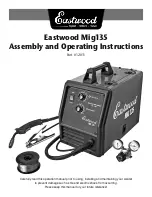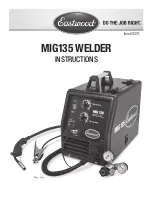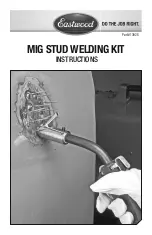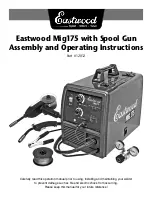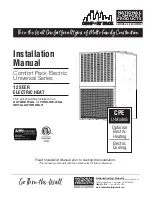
4
When retrofitting an existing Model 113RFP Flood Protection ACV,
disconnect the electrical power before retrofitting the old Junction
Box to the new one.
CAUTION
!
Wiring/Retrofi tting the junction box
POWER
CELLULAR
loT
FLOOD
1
2
FLOOD
FLOOD
GND
+12Vdc
TEST
RESET
CN2
PROG
Relay with Red
LED Indicator
15
10
20
5
25
0
30
SEC
Power
UP
1
1
2
2
3
3
4
4
5
5
6
6
7
7
8
8
N
6
5
L1
1
2
Flow
Sensor
Probes
Incoming
Power
120V/1PH
Solenoid
Valve
Remote
Trip
Indication
8
7
Remote
Trip
Indication
3
4
BMS
Wired to
Terminals
3 & 4
Junction Box
Wireless Node
Wired to
Terminals
1 & 2
Wired to
Terminals
7 & 8
Cellular
Connection
to Internet
120Vac
Power
AC Power
Adapter
The Junction Box is valve-mounted, but includes brackets for wall mounting.
Installation and Operation
WARNING
!
Ensure that all power supply to the Junction Box is turned
off before making any connections to the Junction Box.
Failure to do so may result in electrocution, personal
injury, and /or death.
NOTICE
During the retrofitting process on the 113RFP, the system
will not be monitoring for flood detection or protection..
NOTICE
Wiring the Junction Box
For Existing LFF113RFP Installations Only
• After removal of power from the circuit, disengage the
wiring from:
o Main terminals inside Junction Box
o Terminals 1 and 2 (Flow Sensor)
o Terminals 3 and 4 (Solenoid)
o Terminals 5 and 6 (remote trip indicator, if wired)
• Remove the Junction Box from the ACV or wall mount
• Replace the Junction Box with the new, upgraded Junction
Box. The physical dimensions of the new Junction Box are
identical to older units and can be mounted at the same
location.
• The solenoid valve must be rewired into the new junction box
using terminals 3 and 4. If needed, the connection can be
extended by using similar gauge extension wire and a terminal
box. The solenoid must be rewired by a certified electrician.
For All Installations
• Connect the Flow Sensor to the Junction Box using terminals
1 and 2.
• Connect to a Building Management System or alarm for
remote indications of a continuous water discharge using ter-
minals 5 and 6.
• Connect to the Wireless Node using terminals 7 and 8.
• The terminal block accepts 10-22 AWG.
• Terminals 5 and 6 have 120V, 10A maximum.
• The Junction Box voltage is 120V.
• The Sensor Probe voltage is 120VAC, 1.5mA.
• The terminal block has a less than 1 amp draw.












